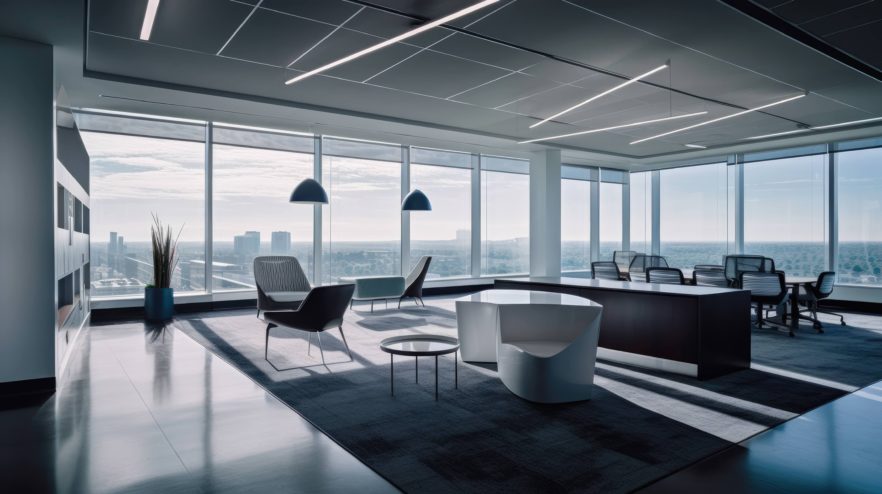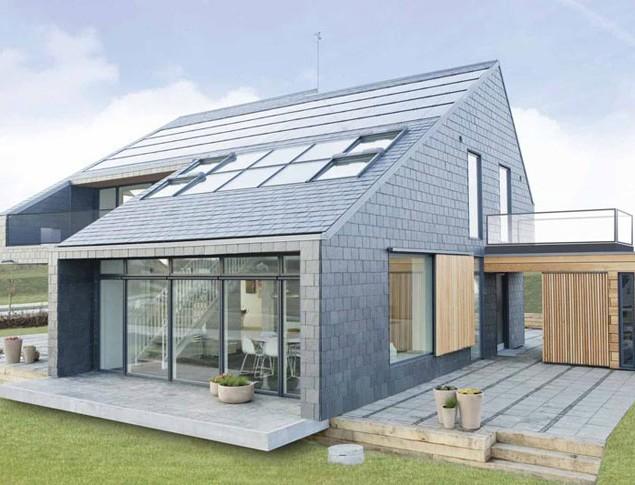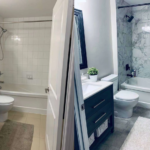In the ever-evolving realm of office design, the modern workplace is going through a remarkable transformation. We’ve bid farewell to the days of traditional cubicles and walled-off offices, welcoming open, adaptable, and aesthetically pleasing spaces that promote teamwork and efficiency.
Playing a pivotal role in steering this change is the growing use of glass partition systems. These sophisticated and versatile solutions are actively molding the modern office environment, imbuing it with an essence of openness, approachability, and refinement.
Throughout this article, we’ll delve into the myriad advantages of glass partition systems and their role in crafting modern office spaces that nurture innovation, collaboration, and employee well-being.
1. The Rise of Glass Partition Systems
In recent decades, workplaces have undergone substantial changes. The once rigid and enclosed spaces have transformed into open floor plans and shared work areas. This transformation is a response to the aspiration for a workplace that promotes collaboration, innovation, and inclusivity. In this journey of change, glass partition systems have risen to prominence as a vital element, acting as a bridge that connects open areas with more private zones.
Glass partitions strike a perfect balance between being see-through and providing privacy. They let natural light flow generously through the office, which results in a feeling of openness and interconnectedness. What’s remarkable is that these partitions can also be customized to offer the right amount of privacy, making them suitable for various office setups.
2. Benefits of Glass Partition Systems
– Natural Light: One of the most significant advantages of glass partition systems is their ability to harness natural light. The use of glass panels, whether clear or frosted, allows sunlight to permeate the office, reducing the need for artificial lighting and creating a more energizing and eco-friendly atmosphere.
- Openness and Transparency: Glass partitions foster a sense of openness, eliminating the feeling of isolation that traditional closed-off offices often produce. This transparency encourages collaboration and enables employees to feel connected to the larger workspace.
- Privacy and Acoustics: While glass partitions maintain transparency, they can also be designed to offer the necessary level of privacy. Frosted, textured, or tinted glass options allow for visual separation without completely isolating individuals. Additionally, acoustic treatments can be incorporated to reduce noise and distractions.
- Flexibility and Adaptability: Modern office spaces need to be adaptable. Glass partition systems are incredibly versatile and can be easily reconfigured to accommodate changing needs. This flexibility is vital in the ever-evolving world of work.
- Aesthetics and Branding: Glass partitions can be customized to align with a company’s branding and design aesthetics. Whether it’s clear, frosted, colored, or etched glass, these systems contribute to the overall visual appeal of the office.
- Cost-Efficiency: Glass partitions are often more cost-effective than traditional construction methods. They require less time and labor to install and can be easily moved or modified, reducing long-term costs associated with office reconfigurations.
- Health and Well-being: The importance of employee well-being is now widely recognized. Glass partitions allow the introduction of natural elements into the workplace, contributing to improved mental and physical health. They also help create a more pleasant work environment, which can boost overall job satisfaction and productivity.
3. Types of Glass Partition Systems
- Frameless Glass Partitions: These partitions feature minimal or no visible framing, offering a seamless and contemporary look. They are commonly used in modern office designs where aesthetics and transparency are paramount.
Framed Glass Partitions: Partitions like these come with clearly visible frames, typically constructed using materials such as aluminum or steel. These frames serve a fundamental purpose in providing structural stability and support, particularly when dealing with larger glass panels. The versatility of framed glass partitions extends to their applicability in both indoor and outdoor settings.
Sliding Glass Partitions: If you’re looking for a smart way to shape adaptable workspaces, sliding glass partitions take the lead. Their design allows for effortless opening and closing, adapting to the layout changes required. Notably, these partitions have gained immense popularity in open-plan offices and conference rooms.
Demountable Glass Partitions: When talking about demountable glass partitions, they’re designed with ease in mind. These partitions can be swiftly put together or taken apart, making them the ideal choice for offices with temporary or frequently changing layouts. Notably, they’re not just flexible but also a cost-effective solution.
4. Designing Modern Office Spaces
In the pursuit of crafting a modern office environment with glass partition systems, it’s of utmost importance to meticulously evaluate a spectrum of elements that harmonize with your company’s culture, brand identity, and the distinct preferences and requirements of your valued employees. We’ll take you through what goes into the process and what the best way to approach it is.
- Define Your Objectives: Start by identifying the objectives of your office design. Do you want to encourage collaboration, provide quiet spaces for focused work, or create a blend of both? Understanding your goals will guide your design choices.
- Layout and Configuration: Plan the layout of your office, considering factors such as workstations, meeting rooms, and breakout areas. Determine how glass partitions can help divide and define these spaces.
- Customization: When it comes to making these glass partition systems your own, you have the creative freedom to select the type of glass and framing that perfectly harmonizes with your office’s unique design style. Whether you prefer clear, frosted, tinted glass, or you want to add a personal touch with custom designs and branding elements etched onto the glass, the choice is yours to make.
- Acoustics: Ensure that your glass partition system addresses acoustic concerns. Acoustic treatments, such as sound-absorbing materials or double-glazed glass, can be integrated to reduce noise pollution in open office settings.
- Lighting: Capitalize on natural light by strategically placing glass partitions. Consider how the movement of the sun affects the workspace throughout the day and how this can impact the placement of workstations and common areas.
- Well-being: Incorporate elements of well-being into your office design, such as indoor plants, ergonomic furniture, and comfortable breakout spaces. A well-rounded approach to design can contribute to a happier and more productive workforce.
- Technology Integration: Make sure you’ve got a solid plan for seamlessly incorporating technology into your office space. Think about essentials like audiovisual equipment, video conferencing setups, and accessible Wi-Fi points to guarantee your workplace is well-equipped to meet your team’s tech requirements.
5. Real-Life Applications
Glass partition systems are incredibly versatile and find their place in a variety of office settings, fulfilling various purposes. Let’s explore a few practical scenarios where these systems come into play:
- Open-Plan Workspaces: In open-plan offices, glass partitions can be used to create individual workstations, meeting areas, or small breakout spaces, offering employees the flexibility to choose their preferred work environment.
- Conference Rooms: Glass-walled conference rooms provide privacy for important meetings while still allowing natural light to flow through. This transparency can create an open and inviting atmosphere for discussions.
- Collaboration Zones: Glass partitions can be used to define collaboration zones within an open workspace. These areas encourage spontaneous interactions and brainstorming sessions.
- Executive Offices: For senior management or executives, glass-walled offices convey a sense of openness and accessibility while maintaining the necessary level of privacy.
- Reception Areas: In your reception spaces, glass partitions can work wonders to craft a contemporary and inviting entrance. The transparent nature of these partitions fosters a sense of connection, helping guests feel more in tune with your company’s culture and values.
6. Conclusion
To sum it up, glass partition systems like the ones provided by CGHardware – glass and metal hardware provider that reshaping the modern office scene. They strike a perfect equilibrium between openness and privacy, all the while championing collaboration, well-being, and flexibility. In the ever-evolving world of workspaces, these systems represent innovation, connectivity, and the path to the future of office design.








